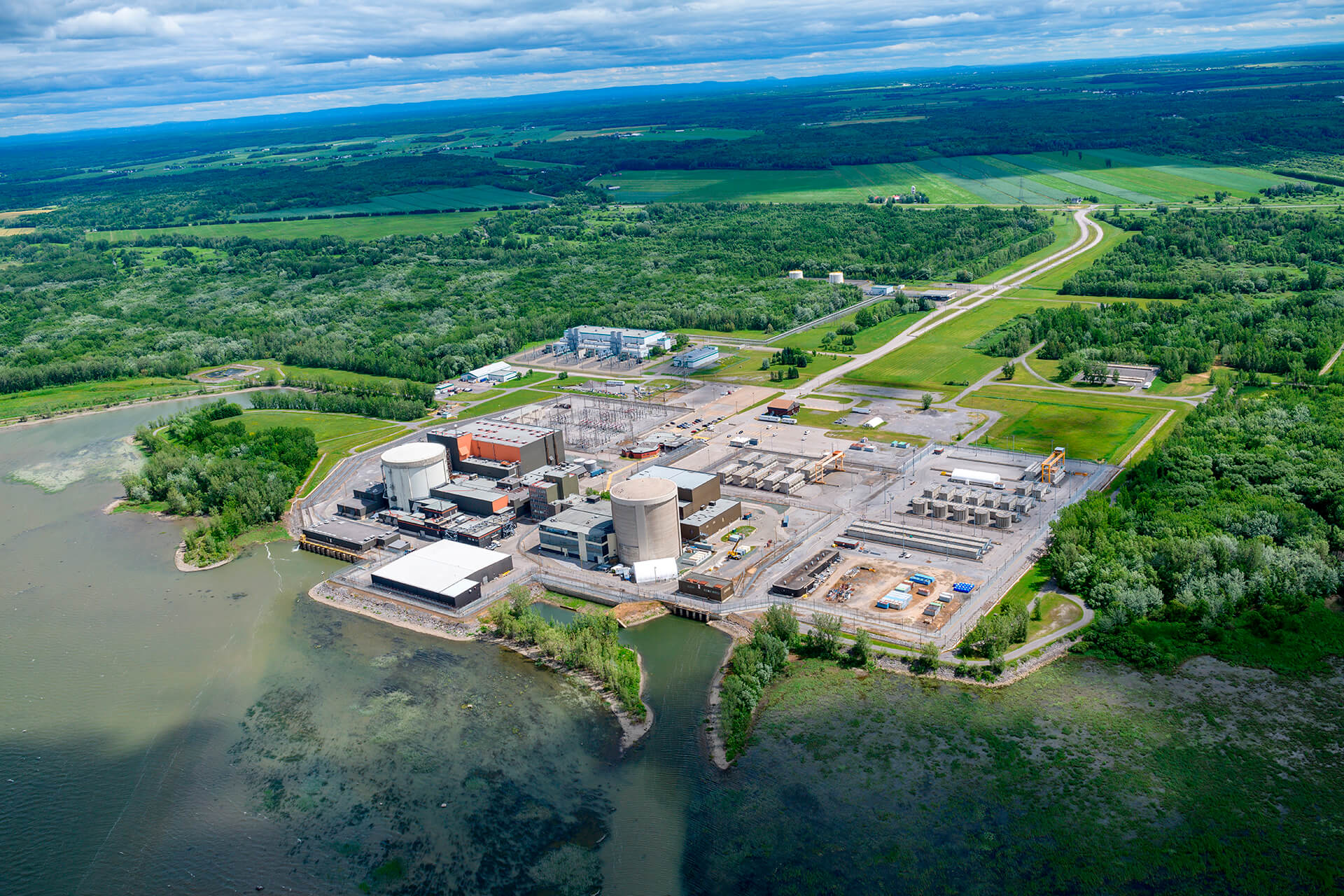Decommissioning of the Gentilly‑2 facilities
What's new?

Public Information Session on the Decommissioning of Gentilly-1 and Gentilly-2 Facilities
May 2025 ‑ Hydro‑Québec and Canadian Nuclear Laboratories would like to invite you to a public information session on the decommissioning projects of the Gentilly-1 and Gentilly-2 facilities in Bécancour.
Our teams will be available to welcome you:
- On May 14th from 2:00 PM to 8:00 PM.
- At the Larochelle Cultural Center, located at 4000 Port‑Royal Boulevard in Bécancour.
The Nuclear Waste Management Organization and the Canadian Nuclear Safety Commission will also be present to answer public questions.
This session aims to provide citizens with information on the ongoing projects. It will also be an opportunity to ask your questions directly to the representatives of the organizations present.

Licence renewal: decommissioning of the Gentilly‑2 facilities
April 2025 ‑ Hydro‑Québec submitted an application to renew its decommissioning licence for a nuclear power plant with the Canadian Nuclear Safety Commission so that it can continue its decommissioning of the Gentilly‑2 facilities. The current licence covers the period from June 2016 to June 2026.
The licence renewal application also provides an opportunity to inform the public about the progress of the decommissioning activities at the Gentilly‑2 facilities. Communications activities are being planned to update the various stakeholders concerning the progress on the project.
In its licence renewal application, Hydro‑Québec is also proposing the early dismantling of buildings and structures containing little or no radioactive contamination and that are no longer useful in the decommissioning process.
Early dismantling will reduce technical risks as well as financial risks.
The buildings we propose to dismantle early are in addition to two buildings whose decommissioning was already slated to be complete in 2025.
Please feel free to contact us if you have any questions or comments regarding the decommissioning licence renewal process for the decommissioning of the Gentilly‑2 facilities.
Dismantling of the water treatment plant and periodic inspection building at the Gentilly‑2 site
May 2023 ‑ The Gentilly‑2 facilities include 17 buildings of different sizes. Two of the buildings are slated for dismantling in summer 2025: the water treatment plant (WTP) and periodic inspection building (PIB).
The WTP and PIB, which contain little to no radiological contamination, no longer serve a purpose in the context of the decommissioning of Gentilly‑2 and their fire-protection devices would required an update to meet current fire safety requirements. Early dismantling will enable our teams to focus their efforts on radiological, environmental and physical site monitoring.
Timeline
- Detailed characterization of buildings
- Detailed decommissioning plan preparation
- Plans and specifications
- Dismantling of both buildings
- Sampling and laboratory analyses

It’s been 10 years since the closing of Gentilly‑2 nuclear power plant: Looking back and next steps
On December 28, 2012, after 29 years of safe operation, Gentilly‑2 nuclear power plant was permanently shut down and began its decommissioning process. Ten years later, some 40 employees continue to work on site to ensure the safety of the facilities, the health and safety of the population, radiation protection and environmental monitoring.
As we prepare for dormancy, our priorities for 2023 include carrying out radiological, environmental and physical monitoring in addition to managing the aging infrastructure.
Did you know? Since Gentilly‑2 nuclear power plant was put off-line, contracts totalling almost $30 million have been awarded to companies in the Mauricie and Centre-du-Québec regions.

Archeological surveys around the Gentilly‑2 facilities mandated by the Grand conseil de la Nation Waban‑Aki
On October 20, 2021, we opened our doors to a team of four archeologists mandated by the Ndakina office of W8banaki. Their goal? Carry out an archeological inventory and find traces of occupation by the W8banaki Nation along the Rivière Gentilly.
“Namasak,” the W8banaki place name for the head of the Rivière Gentilly, means “fish,” which leads us to believe that it may have been an important fishing area for the local W8banakiak prior to or during colonization, or even in more recent times.
We are pleased to have been able to collaborate in this great initiative.
Connect with us
We’re committed to keeping the lines of communication open. Please send us your questions and comments about the project.


